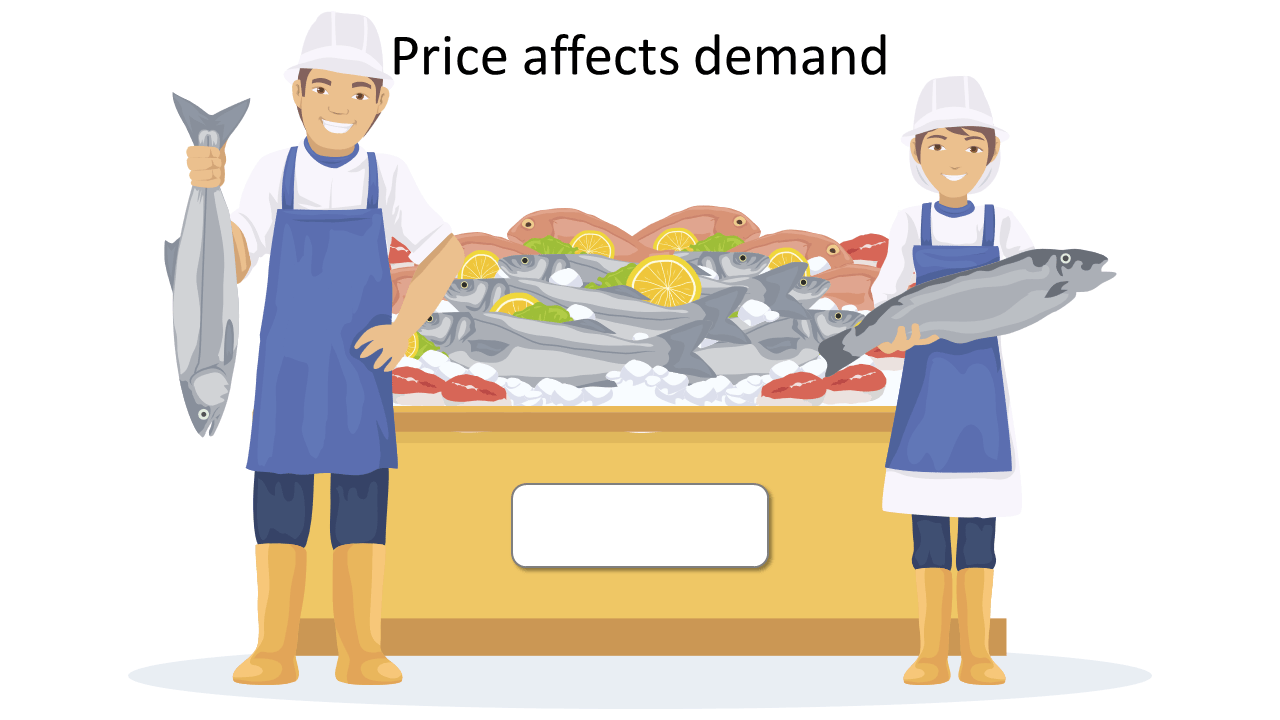In simple terms, we consider a market as a focus on a particular product, set of suppliers and buyers, along with various dynamics affecting prevailing supply, demand and price.
Around the world, the supply of various products and services into a market is often determined by the available natural resources or the different manufacturing sectors that have been allocated investment and resources. For example, in Queensland, Australia, Bundaberg produces a lot of sugar cane. Whereas in industrialised cities in Japan, automotive manufacturing is strong, producing makes of cars such as Toyota, Suzuki and Mitsubishi. The concentration and efficient use of natural resources can give a comparative advantage over other potential suppliers.
In addition to the direct relationship between supply and demand, some factors correlate with either supply or demand. For example, demand for umbrellas increases with winter rain, while demand for ice cream increases during summer. Therefore, the weather is a factor that influences demand but is not part of the market. Whereas an increased supply of a suitable substitute product at a lower price may affect the market of another product. For example, the lemon market may be affected by an increased supply of limes at a more reasonable price.
Welcome to Topic 2: Supply and Demand. In this topic, you will learn about:
- Markets and market advantages
- Supply and demand curves
- Supply and demand determinants.
These relate to the Subject Learning Outcomes:
- Understand the microeconomic models to consider fundamental economic choice for households and firms.
- Interpret economic models, diagrams, and tables to describe the economic situations.
- Explain how government policy influences microeconomic choices and macroeconomic outcomes.
Welcome to your pre-seminar learning tasks for this week. Please ensure you complete these prior to attending your scheduled seminar with your lecturer.
Click on each of the following headings to read more about what is required for each of your pre-seminar learning tasks.
Read the following chapters in the prescribed text, Mankiw, NG 2016, Principles of Microeconomics, 8th edn., Cengage Learning Custom Publishing.
- Chapter 3, pp. 52-60
- Chapter 4, pp. 63-75.
Task: Take notes in your reflective journal and describe key information you have learnt about comparative advantage.
You can access the reflective journal by clicking on 'Journal' in the navigation bar for this subject.
Read the following web pages:
- Britannica Encyclopedia 2020, Supply curve, Britannica.
- Britannica Encyclopedia 2016, Demand curve, Britannica.
There are discussion forum activities for this topic, which will enhance your knowledge and give you the opportunity to interact with your peers. You can access the activities by clicking on the following links. You can also navigate to the forum by clicking on 'ECO100 Subject Forum' in the navigation bar for this subject.
- Topic 2, Forum activity 1: The diamond market
- Topic 2, Forum activity 2: The fuel market
Read the following content.

Supply and demand are among the most significant drivers in economic terms. The demand for goods and services is what underpins economic growth. At a macroeconomic level, business investment will be influenced by the price of credit, in other words, the interest rates that determine the price of gaining funds to invest in business growth.
The following figure illustrates the generic supply and demand curves. These curves are indicative of supply and demand before the impact of the many input factors we shall examine throughout the subject.
Markets and market advantages
We know that there a very few, if any, remaining individuals or villages who are entirely self-sufficient. Almost no one produces everything they need themselves. Even in remote, isolated villages, there may be people who perform different roles, such as those who fish, grow crops or herd animals. Individuals would then share, barter or trade their excess product, to gain what they need but cannot produce themselves.
The fundamentals of economics hold that markets will determine the most efficient means of production due to scarcity. Each subsequent market will have supply and demand dynamics.

The supplier tends to control most of the factors of supply but not all. For example, fresh fish supply will vary if the fishing boat goes out seven days a week or can only fish one day a week (by choice or due to bad weather). Factors such as these will influence supply.
We also know that price of any product will influence demand. If the fish are for sale at $1 each, there is likely to be greater demand for them than if the fish were priced at $20 each. Typically, demand is lower for the same product at the higher price.
Watch the following image as it moves through explanations on supply and demand.

Absolute advantage
According to Mankiw (2016), the concept of absolute advantage compares the productivity of one person, firm or nation to that of another. The producer that requires the smallest quantity of inputs to produce the same quantity of a particular good is said to have an absolute advantage in producing that good. For example, it would take more water as an input into farming a specified amount of carrots in an arid country such as Morocco than in a country with high annual rainfall, such as Ireland. In this example, carrot farmers in Ireland would have an absolute advantage over carrot farmers in Morocco.
In his seminar article for the Harvard Business Review, Porter (1990) examines how the natural wealth of different nations may give them a comparative advantage at producing (supplying) certain goods, often commodities. The subsequent analysis of each type of product produced in a particular country compared to other nations producing the same products identifies the country (supplier) with an absolute advantage over others in supplying a particular good. This analysis considers the trade-off of resource allocations and quantifies the value of other possible options. The analysis results effectively identify the most efficient use of resources for a particular country and, in turn, recommend which goods to produce themselves and to trade for other goods that are not efficient to produce.
Comparative advantage
Comparative advantage occurs when one person, firm or nation can produce a particular good or service at a lower cost than their competitors. For example, Greenland may have a comparative advantage in producing ice compared to Egypt. Australia has a comparative advantage for sheep production and the mining of iron ore and coal compared to the small pacific islands of Samoa.
Suppose there is only one house in a neighbourhood with a yard large enough for a veggie patch. A child living in that house could offer a market for fresh tomatoes to their neighbours. In this example, the nearest competition to supply tomatoes could be a greengrocer store. However, the store has high input costs to consider, such as rent and staff wages. On the other hand, tomatoes growing in a backyard veggie patch have a very low input cost and no costs relating to transport, storage or many of the other input costs of the greengrocer business. The opportunity cost is very low as a child because they are not diverting their resources from anything more valuable.
Watch the following image as it moves through explanations on comparative advantage.

Supply and demand curves
Supply curve
First, let us look at supply. The historical premise is that only goods that could be produced could then be demanded (by an offer to buy from customers).
The supply curve is a graphical representation of
the relationship between product price and quantity of product that a seller is willing and able to supply.
The following are key concepts relating to the microeconomic supply curves and are vital to understand:
- With increased supply, prices may fall, and demand may increase.
- When macroeconomic factors are present (such as high-interest rates and/or high unemployment), demand may reduce and lead to lower prices and a contraction in supply.
- When demand increases for external reasons (such as the weather), prices may also increase. For example, a rainy day increases demand for umbrellas, and with greater demand, the suppliers may also increase the price.
- Demand across many products and markets can increase due to macro factors. Generally, when employment is high, incomes are high and the economy grows, then consumption across many markets will be higher. And the opposite is also true.
- In some markets, the supply can increase if demand grows, but many businesses cannot increase supply quickly enough. For example, an individual buyer may have to wait months to receive a new car; this is known as a shortage.
- In peak supply conditions, such as when in late winter when all the strawberries are ripe and supply is high, prices fall. This can be considered a glut in the market.
- Christmas tree demand and prices can be very high in December, but supply and price fall a lot in January.
- Fresh flowers are most in demand before Mother's Day, and consequently, prices are high, and there is a high supply level. Supply and demand will peak at a high price. Supply will fall soon after.
- On a given market graph, it is said that supply and demand may increase and/or contract, prices may rise and fall.
Demand curve
The demand curve refers to “the effect of a good’s price on quantity of the good consumers want to buy” (Mankiw 2016, p.39). The demand curve is specifically “a graphical representation of the relationship between the price of goods or service and the quantity demanded for a given period of time” (Kenton 2021). Let us look at this using an example.

Think about when you purchase petrol for your car. When the price of petrol falls, you (and others) are likely to purchase more petrol. You may choose to travel more for leisure or just fill up your tank in anticipation of the price increasing later. Think about how the price of a product or service effects the demand. If the price of petrol were to rise, will the demand decrease? What do you think people will do as a result?
If you said that the demand will decrease, and people might resort to walking, riding their bike, carpooling or taking public transport more often, then you were right!
Equilibrium
As defined by Mankiw (2016, p.76) equilibrium is “a situation in which the market price has reached the level at which quantity supplied equals quantity demanded”. The intersection of the supply and demand curves is known as the equilibrium point. The equilibrium point is considered the most efficient point, and the market is said to be in equilibrium.
Following on from the previous petrol example, market equilibrium could hypothetically be reached when the price is $1.50 per Litre, and with a supply of 75 litres per consumer, per week. This equilibrium is represented by the point at which the supply and demand curves intersect, as shown in the following figure.
Adapted What are supply and demand curves by Mindtools 2021, Copyright 2021 MindTools.
Petrol sales are a particularly good example of market equilibrium because petrol prices continually fluctuate, and consumers are influenced by the price level at which it is supplied.
Learning task 1: Demand and equilibrium
In your reflective journal, describe two (2) other examples to explain demand and equilibrium. You may like to consider the nappy, coffee, milk or computer markets.
Supply and demand determinants
Now you should have a good understanding of supply and demand. Let us look deeper to understand what determinants, also known as factors, affect supply and demand.
Learning task 2: Supply and demand
Watch the following videos about supply and demand.
Task: In your reflective journal, identify the actual curve movements and the causes of movements in the supply and demand curves shown in the two videos.
When examining the determinants of supply, it is essential to identify that some of the factors are within the control of the supplier or seller. For example, a supplier can control the hours that the store is open and how much product they decided to manufacture, grow, catch or distribute. On the other hand, determinants of demand are factors determined by the buyer. However, other factors affect demand but are outside the buyer's control.
Imagine you take a second job and as a result earn more income. You now have more money to spend on dining out at restaurants, going to the movies and buying more luxury items – your demand has increased. Taking on another job is within your control.
Now suppose that your working hours decrease because the company you work for must cut back staff due to the impacts of an external force, such as COVID-19. You now have less money to spend on luxury items and your demand decreases again. This reduction in income is a macroeconomic factor that is outside of your control. Other examples of macroeconomic factors include high inflation, high employment, low exchange rate and many more.
Perhaps the most important aspect of supply and demand curves is understanding the factors:
- over which a business or consumer has control
- outside of the individual’s or business’s control, but which should be considered when making decisions around business investment, production, individual purchases and so on.
It is important that both businesses and consumers remember that external factors can impact supply and demand dramatically. Understanding economics, specifically supply and demand, will better inform how businesses and consumers can respond.
Learning task 3: Impacts of COVID-19
In your reflective journal, identify an example of how COVID-19 has impacted supply and demand of a product or service. Your example may be of the industry in which you work or a product or service you commonly purchase, such as toilet paper. Explain how the supply and demand have increased or decreased and the factors affecting your chosen market.
Knowledge check
Complete the following three (3) tasks. Click the arrows to navigate between the tasks.
Key takeouts
Congratulations, we made it to the end of the second topic! Some key takeouts from Topic 2:
- Individuals or countries can have a comparative advantage and/or an absolute advantage in the production of various goods in a given market.
- Efficient allocation of resources will influence effective supply and demand in a market.
- Various macroeconomic factors can impact microeconomic markets, affecting supply and demand.
- Various supply factors can be controlled and adjusted by the supplier.
- Demand factors must be considered in terms of wants and needs at an individual or household level. Some demand factors are not within the individual's/household's control.
- A consumer who understands microeconomic conditions and macroeconomic factors may allocate their resources (time skills) most efficiently.
Welcome to your seminar for this topic. Your lecturer will start a video stream during your scheduled class time. You can access your scheduled class by clicking on ‘Live Sessions’ found within your navigation bar and locating the relevant day/class or by clicking on the following link and then clicking ‘Join’ to enter the class.
Click here to access your seminar.
The learning tasks are listed below. These will be completed during the seminar with your lecturer. Should you be unable to attend, you will be able to watch the recording, which can be found via the following link or by navigating to the class through ‘Live Sessions’ via your navigation bar.
Click here to access the recording. (Please note: this will be available shortly after the live session has ended.)

In-seminar learning tasks
The in-seminar learning tasks identified below will be completed during the scheduled seminar. Your lecturer will guide you through these tasks. Click on each of the following headings to read more about the requirements for each of your in-seminar learning tasks.
Working in a breakout room assigned by your lecturer, complete the following task. Your lecturer will request that you present the findings back to the class.
Imagine yourself as the supplier in a microeconomic market. Identify the determinants of supply of your resources (time, energy, skills, labour) for an employment opportunity to work as a garbage collector, up to 50 hours a week, with work shifts between 4 am and 2 pm, seven (7) days a week, paid $2 per hour.
Task: Identify and explain the top three (3) determinants of the supply of your services. Record your answers in the Topic 2 Worksheet. Be ready to discuss your answers with the class during the seminar.
Working in the same breakout room as previously, complete the following task. Your lecturer will request that you present the findings back to the class.
This time, imagine yourself as the buyer. What are the determinates of demand for a new smartphone?
Task: Identify and explain the top three (3) determinants of the demand for a new smartphone. Record your responses in the Topic 2 Worksheet. Be ready to discuss your answers with the class during the seminar.
Welcome to your post-seminar learning tasks for this week. Please ensure you complete these after attending your scheduled seminar with your lecturer. Your lecturer will advise you if any of these are to be completed during your consultation session. Click on each of the following headings to read more about the requirements for each of your post-seminar learning tasks.
Watch the video, Clifford J 2017, Supply and Demand Practice, streaming video, YouTube
Task: During and following the video, summarise your understanding of the determinants of supply and determinant of demand. Write your notes in your reflective journal and identify any determinants that you are struggling to understand.
Read the following journal article to understand the effects of demand on a market with rapidly changing technology:
Koren, M & Muraközy, B 2011, ‘The demand and supply of quality: a case study of televisions’, EFIGE working paper 30, March, EFIGE
Task: After reading the journal article, consider what would have happened to television supply and demand. Has it increased or decreased with the greater use of tablets and mobile phones since 2011? Identify the change and discuss your answer in your reflective journal, taking note of the supply and demand curve. Reach out to your lecturer for assistance on any of these determinants.
Prepare a list of key terms from this topic and check your understanding.
In preparation for your first Assignment, revise for the first quiz. It is recommended that you review previous learning tasks and the notes in your reflective journal.
You will be required to complete the first Quiz for Assessment 1. Select ‘Assessment’ at the end of this topic.
Each week you will have a consultation session, which will be facilitated by your lecturer. You can join in and work with your peers on activities relating to this subject. These session times and activities will be communicated to you by your lecturer each week. Your lecturer will start a video stream during your scheduled class time. You can access your scheduled class by clicking on ‘Live Sessions’ found within your navigation bar and locating the relevant day/class or by clicking on the following link and then clicking 'Join' to enter the class.
Click here to access your consultation session.
Should you be unable to attend, you will be able to watch the recording, which can be found via the following link or by navigating to the class through ‘Live Sessions’ via your navigation bar.
Click here to access the recording. (Please note: this will be available shortly after the live session has ended.)

- Chapter 3 of Greenlaw SA, Shapiro, D 2011, Principles of Macro-economics, 2nd end., openstax
- Chapter 3 of McConnell, CR 2008, Economics: principles, problems, and policies, 18th edn., McGraw-Hill/Irwin.
- Tenner, E, n.d., The paradox of efficiency Ted-Ed, Streaming video,
References
- Britannica Encyclopedia 2020, supply curve, Britannica, https://www.britannica.com/topic/supply-curve
- Britannica Encyclopedia 2016, demand curve, Britannica, https://www.britannica.com/topic/demand-curve
- Clifford, J, Hill, A 2015, Supply and Demand: Crash Course Economics, streaming video, YouTube, https://www.youtube.com/watch?v=g9aDizJpd_s
- Clifford, J 2017, Supply and Demand Practice, streaming video, YouTube, https://www.youtube.com/watch?v=9QSWLmyGpYc
- Economics Mafia 2015, Shifting of Demand and Supply Curves, streaming video, YouTube, https://www.youtube.com/watch?v=T6kr-70IaHE
- Kenton, W 2021, Supply curve, Investopedia. https://www.investopedia.com/terms/s/supply-curve.asp
- Koren, M & Muraközy, B 2011, ‘The demand and supply of quality: a case study of televisions’ EFIGE working paper 30, March 2011, .https://www.bruegel.org/wp- content/uploads/2015/09/efige_wp30_1703117.pdf
- Mankiw, NG 2016, Principles of Microeconomics, 8th edn., Cengage Learning Custom Publishing.
- MindTools 2021, What are Supply and Demand Curves, MindTools, https://www.mindtools.com/pages/article/newSTR_69.htm
- Porter, ME 1990, ‘The Competitive Advantage of Nations', Harvard Business Review, https://hbr.org/1990/03/the-competitive-advantage-of-nations
